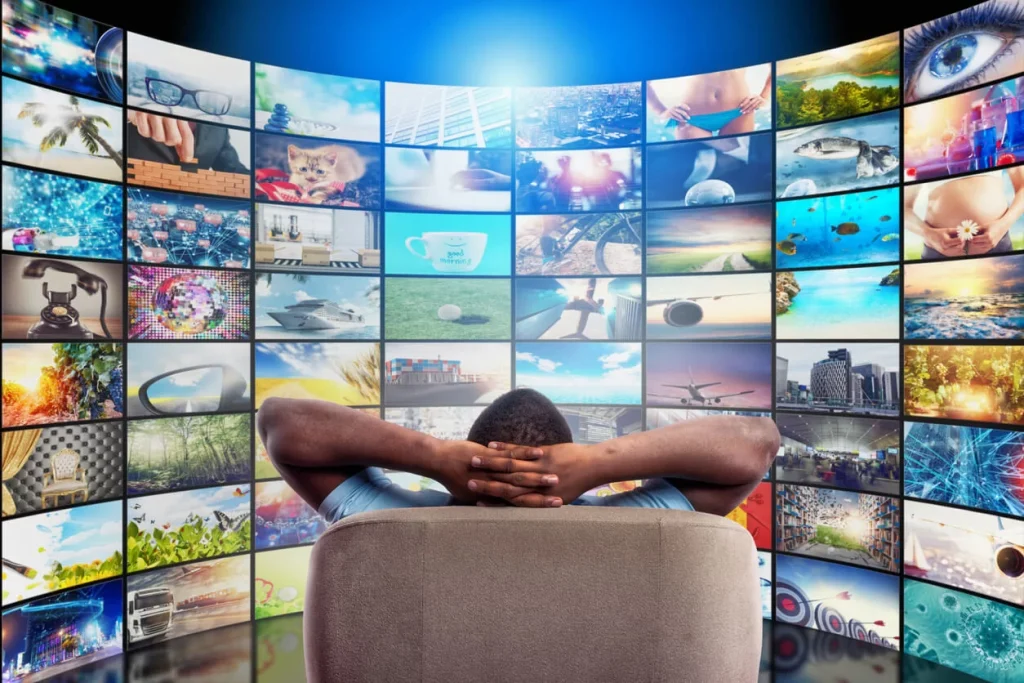The rise of streaming services has fundamentally reshaped how we watch television, ushering in a new era of on-demand content. Gone are the days of rigid TV schedules and waiting for a week to catch the next episode of your favorite show. Services like Netflix, Amazon Prime Video, Disney+, and HBO Max have put viewers in the driver’s seat, offering entire seasons or even entire catalogs of shows to binge-watch at their own pace. This shift has not only disrupted traditional cable TV but has also introduced a level of convenience that was previously unimaginable. The ability to watch shows across multiple devices—whether at home on a smart TV, on your phone while commuting, or on a tablet while traveling—has made TV more portable and accessible than ever. As streaming continues to evolve, we’re witnessing a shift away from scheduled programming toward a model centered on flexibility, personal choice, and accessibility.
2. Original Content: The Battle for Exclusive Shows and Movies
One of the defining features of streaming platforms is their increasing investment in original content. To attract and retain subscribers, services are focusing heavily on producing exclusive shows, movies, and documentaries that can’t be found elsewhere. Netflix’s Stranger Things, Amazon Prime Video’s The Boys, and Apple TV+’s Ted Lasso are just a few examples of how streaming platforms have leveraged original content to build dedicated fan bases and stand out in a crowded marketplace. This trend has created a competitive arms race among streaming giants, all vying for top talent, unique ideas, and global attention. What’s more, these platforms are often willing to take creative risks—pushing boundaries with new formats, diverse storytelling, and innovative narratives. As a result, TV audiences are benefiting from fresher, more diverse content than traditional networks were able to provide. With streaming services continuing to ramp up their investment in exclusive offerings, the future of TV is one where originality is king, and viewers are the ultimate beneficiaries.
3. The Decline of Traditional Cable: Is TV Viewing Becoming Obsolete?
As streaming services continue to thrive, the decline of traditional cable TV has become increasingly apparent. In recent years, many households have “cut the cord,” abandoning cable packages in favor of more flexible and affordable streaming options. The growing availability of internet-based alternatives like Hulu, Sling TV, and YouTube TV has made it easier than ever for viewers to access live channels, sports, and news without a traditional cable subscription. In fact, this shift has led to a significant drop in cable subscriptions, with many analysts predicting that cable TV may eventually become obsolete. Moreover, streaming services’ ability to offer tailored content—based on algorithms that predict what you might like to watch—has made traditional TV’s reliance on linear programming feel outdated. With this major shift in viewing habits, the entertainment industry is being forced to adapt, and the days of paying for bundles of channels you never watch are rapidly fading away.
4. Global Reach: Breaking Down Geographical Barriers in TV Programming
One of the most significant advantages of streaming platforms is their ability to offer global content. Unlike traditional TV networks, which are often bound by regional programming and licensing agreements, streaming services can offer a worldwide catalog of content that transcends borders. This has opened the doors to international TV shows and films, giving audiences access to content from every corner of the globe. Hit shows like Money Heist (Spain), Squid Game (South Korea), and Dark (Germany) have found global audiences, helping to blur the lines between national entertainment industries. In 2024, more streaming platforms are focusing on localizing content, both in terms of language and culture, to cater to diverse global markets. As a result, viewers are not just consuming content from their own countries—they’re now exploring stories from different cultures, leading to a richer and more diverse TV landscape. This global reach is one of the key factors driving the future of television, as streaming services continue to break down traditional geographical barriers in entertainment.
5. The Future of Streaming: Innovation and Consumer-Centric Models
As streaming services evolve, so too will the way we consume television. The next frontier in streaming is the growing integration of interactive content, virtual reality (VR), and artificial intelligence (AI) to personalize the viewing experience even further. Platforms are beginning to experiment with interactive features, such as Netflix’s Bandersnatch, which allows viewers to make choices that influence the storyline. Meanwhile, virtual reality could soon offer fully immersive viewing experiences, transporting viewers directly into the world of their favorite shows. AI is also playing a role in predicting viewing preferences and curating content, giving users even more control over what they watch. Moreover, subscription models are shifting as well. While ad-free subscriptions remain the gold standard, platforms are increasingly offering more affordable options that include ads—an attempt to reach a wider audience while still delivering premium content. The future of streaming looks bright, and as technology continues to improve, we can expect even more innovation that puts viewers at the center of the experience.


